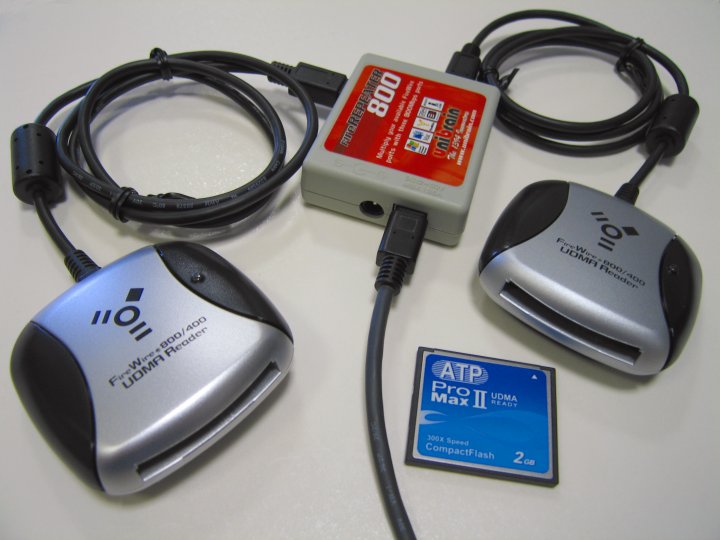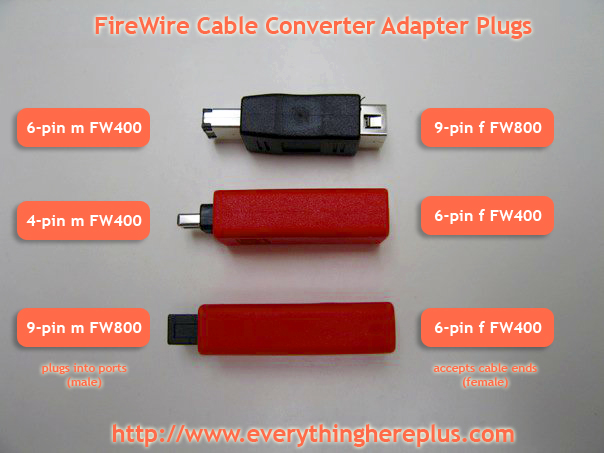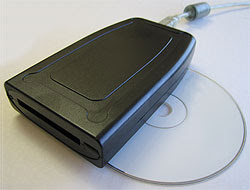
A frequently asked question about FireWire repeater hubs is "do I need the optional power supply?" The answer to this question depends on the types of FireWire 800 or FireWire 400 devices are being used.
Quick Definitions: Self Powered vs. Bus Powered
Self Powered FireWire devices are ones that plug into the wall or utilizes internal batteries. One example is FireWire hard disk drives using 3.5in mechanism which come with their own power transformers and AC adapters. Another example are battery powered DV Camcorders. Most FireWire based audio equipment like those from Pro Tools is self powered as well
Bus Powered FireWire devices draw current from the FireWire bus itself. FireWire hard disk drives using 2.5in mechanisms are typically able to use bus power. Our CFFire800 Pro FireWire 800 UDMA CompactFlash reader requires bus power. Portable devices like the Apogee Duet require bus power as well.
If you are using self powered devices with a FireWire repeater hub, then there isn't a need to purchase an optional power supply. Conversely, if you are using bus powered FireWire products, you almost certainly need the optional power supply. [1]
Bus Power isn't always enough for multiple devices drawing current off multiple ports at the same time. If you daisy chain several devices, it also may draw more current than available. Further, the total amount of Amps a hub provides needs to divided by the number of ports to find per port current when each port is drawing current. In the case of Unibrain's FireRepeater 3A supply, this would work out approximately as follows:
- Unibrain FireRepeater-800 Pro FireWire 800 IEEE 1394b Repeater Hub 5 Port
- (3 amperes) / 5 = 0.6 amperes approximately per port (max)
- Unibrain FireRepeater-800 Pro FireWire 800 IEEE 1394b Repeater Hub 4 Port
- (3 amperes) / 4 = 0.75 amperes approximately per port (max)
- Unibrain FireRepeater 800 FireWire 800 IEEE 1394b Repeater Hub 3 Port
- (3 amperes) / 3 = 1 ampere approximately per port (max)
- Unibrain FireRepeater 400 FireWire 400 IEEE 1394a Repeater Hub 3 Port
- (3 amperes) / 3 = 1 ampere approximately per port (max)
Often computer companies will list ports by watts, instead of amps. When a company lists Watts for their FireWire ports, divide it by 12 (FireWire is typically 12 Volts) to find the Amperage.
The calculation above are the worst case scenario, typical application rarely see devices drawing current of each port.

[1] A notible exception was the CFFire800 Pro FireWire 800 UDMA CompactFlash reader with Unibrain's 3 Port FireWire 800 Hub. We've tested this off a powered Mac port and were able to run two CFFire800 Pro's without the addtional power supply. Here is a quote from our test results.
While our CFFire800 Pro uses FireWire bus power, we knew it draws less than 500mA, while the MacBook Pro provides just under 1A of current while running on batteries. One product we offer, Unibrain's extremely portable FireRepeater 800, splits source current between two ports. With that in mind we set out to test two CFFire800 Pro readers with FireRepeater 800 to see if it provided enough power off a single FireWire 800 port to enable both CompactFlash readers; we found it worked flawlessly.
12VDC 3A External Power Supplies/Adapters for Unibrain FireWire Devices
This versatile adapter provides up to 3A stable regulated 12V DC output. For use with Unibrain Fire Repeaters, Fire-i Digital cameras and Unibrain FireWire External Hard Drives. It provides power for FireWire devices on laptops that do not provide power through the FireWire ports and can provide additional power for devices connected in an extended link to desktop systems.
- Part Number and Description
- PS-12VDC-UB 12VDC 3A External Power Supply/Adapter UB (FireWire)
- PS-12VDC-UB-EUROPE 12VDC 3A External Power Supply/Adapter UB (FireWire) for European Type C/F outlets
- Others available on special order, contact us with outlet type





